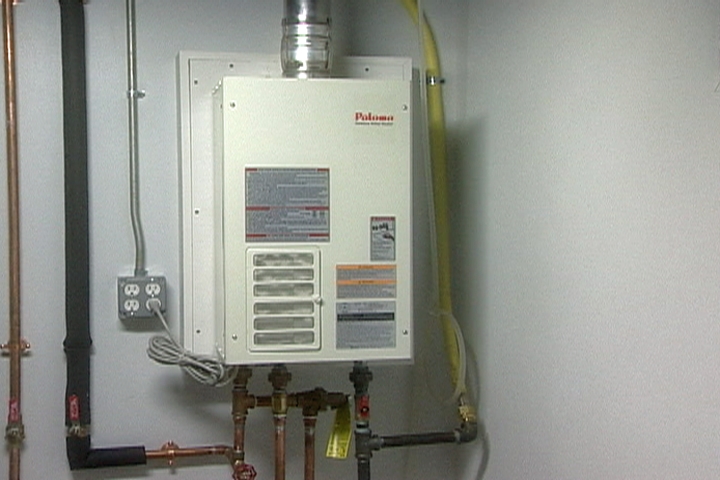Caring for Your Home's Hot Water System: Key Guidelines
Caring for Your Home's Hot Water System: Key Guidelines
Blog Article
Presented here on the next paragraphs yow will discover a lot of quality news with regards to How to Maintain a Hot Water Heater in a Few Simple Steps.

Hot water is essential for day-to-day convenience, whether it's for a revitalizing shower or cleaning recipes. To guarantee your hot water system runs effectively and lasts longer, regular maintenance is key. This article provides sensible pointers and understandings on just how to preserve your home's hot water system to avoid disruptions and pricey fixings.
Intro
Maintaining your home's warm water system could appear difficult, but with a few straightforward actions, you can guarantee it operates smoothly for several years to find. This guide covers everything from comprehending your hot water system to DIY upkeep ideas and understanding when to hire specialist assistance.
Importance of Keeping Your Hot Water System
Regular maintenance not only expands the lifespan of your warm water system however also guarantees it runs efficiently. Ignoring maintenance can bring about decreased performance, higher energy costs, and even premature failing of the system.
Signs Your Warm Water System Needs Upkeep
Understanding when your hot water system requires attention can protect against major problems. Look out for indicators such as inconsistent water temperature level, odd noises from the heating system, or rusty water.
Recognizing Your Hot Water System
Prior to diving right into maintenance jobs, it's helpful to recognize the basic elements of your hot water system. Normally, this includes the water heater itself, pipelines, anode rods, and temperature level controls.
Monthly Upkeep Tasks
Normal regular monthly checks can aid capture small issues before they rise.
Flushing the Hot Water Heater
Flushing your hot water heater removes debris build-up, enhancing effectiveness and prolonging its life.
Checking and Changing Anode Rods
Anode poles avoid deterioration inside the tank. Checking and changing them when worn out is vital.
Evaluating and Readjusting Temperature Settings
Changing the temperature level settings makes sure optimum performance and security.
Do It Yourself Tips for Upkeep
You can execute several upkeep jobs yourself to keep your warm water system in leading condition.
Checking for Leakages
Regularly inspect pipes and links for leakages, as these can lead to water damage and greater costs.
Testing Pressure Alleviation Valves
Examining the pressure relief valve ensures it works appropriately and prevents extreme pressure build-up.
Shielding Pipes
Insulating warm water pipes reduces heat loss and can save energy.
When to Call an Expert
While do it yourself upkeep is beneficial, some issues need expert experience.
Facility Concerns Needing Specialist Aid
Instances include major leaks, electrical problems, or if your water heater is regularly underperforming.
Routine Professional Maintenance Advantages
Professional maintenance can include comprehensive inspections, tune-ups, and making certain compliance with safety standards.
Conclusion
Regular maintenance of your home's warm water system is essential for efficiency, long life, and price financial savings. By complying with these ideas and understanding when to seek professional help, you can ensure a reliable supply of warm water without unforeseen disruptions.
How to Maintain an Instant Hot Water Heater
Before tinkering with your hot water heater, make sure that it’s not powered on. You also have to turn off the main circuit breaker and shut off the main gas line to prevent accidents. Also turn off the water valves connected to your unit to prevent water from flowing into and out of the appliance. 2. When you’re done, you have to detach the purge valves’ caps. These look like the letter “T†and are situated on either side of the water valves. Doing so will release any pressure that has accumulated inside the valves while at the same time avoid hot water from shooting out and burning your skin. 3. When the purge valves’ caps are removed, you have to connect your hosing lines to the valves. Your unit should have come with three hoses but if it didn’t, you can purchase these things from any hardware or home repair shops. You can also get them from retail stores that sell water heating systems. Read the user’s manual and follow it to complete this task properly. When the hosing lines are connected, open the purge port’s valves. 4. You should never use harsh chemical cleaners or solutions when cleaning your unit. Make use of white vinegar instead. It should be undiluted and you’ll probably use about 2 gallons. 5. Now flush your water heater. This task should probably take about 40 minutes. We can’t give you specific directions for this because the procedure is carried out depending on the type, model and brand of your heater. With that being said, refer to the user’s manual. 6. When you’re done draining the unit, you have to turn off the purge port valves again. Remove the hosing lines that you earlier installed on each of the water valves. Put the valve caps (purge port) back in their respective places and be very careful so as not to damage the rubber discs that are found inside these caps. 7. Now that everything’s back in place, check your user’s manual again to find out how to reactivate your water heating system. 8. Once it is working, turn one of your hot water faucets on just to let air pass through the heater’s water supply pipes. Leave the tap on until water flows smoothly out of it. https://www.orrplumbing.com/blog/2014/september/how-to-maintain-an-instant-hot-water-heater/

As a fervent person who reads on Tips on Maintaining a Water Heater, I was thinking sharing that piece was appropriate. Make sure you set aside a second to share this write-up if you enjoyed reading it. Thanks a lot for taking the time to read it.
Book Appointment Report this page